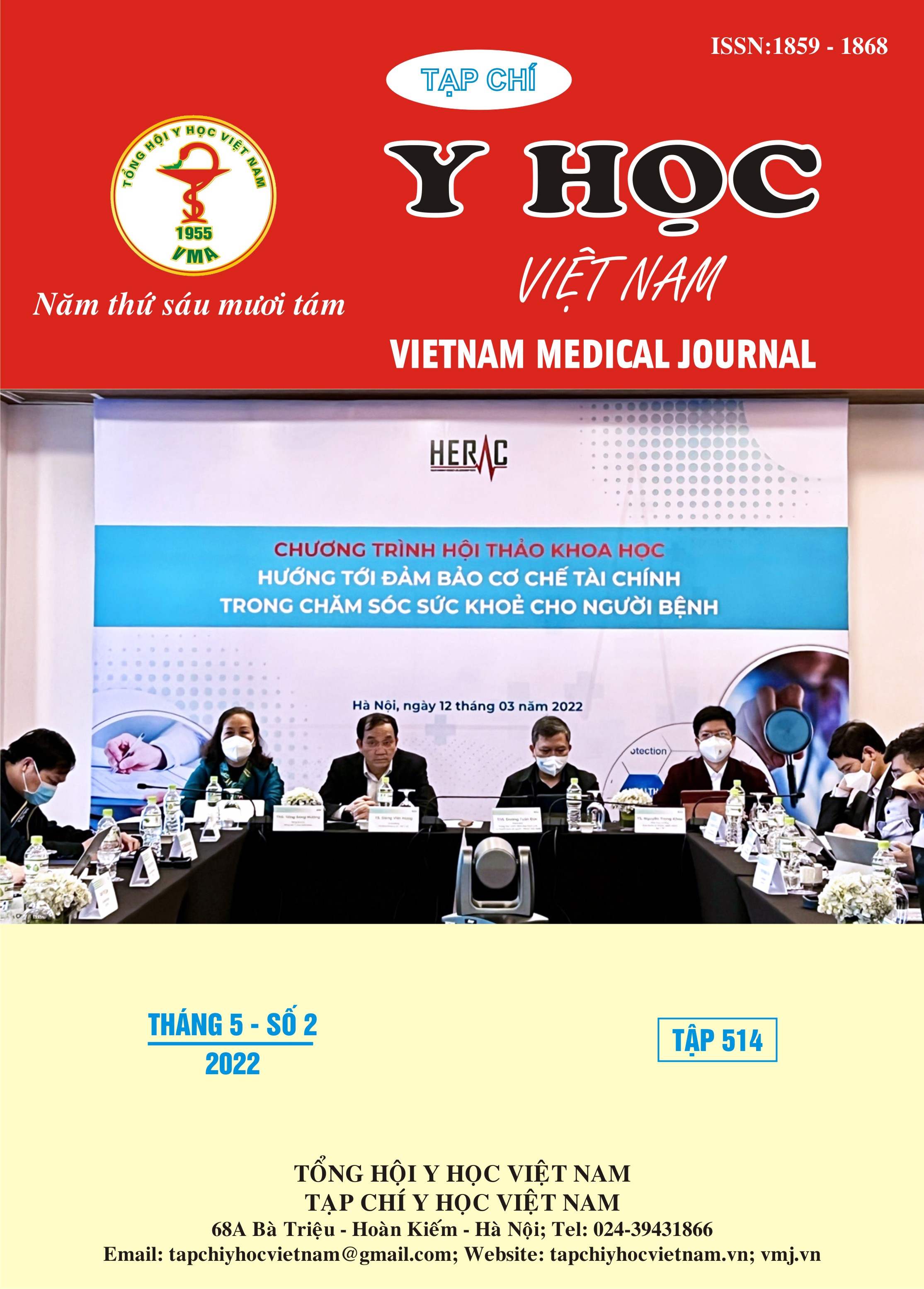CLINICAL AND ENDOSCOPIC FEATURES OF COLORECTAL POLYPS DETECTED AT GASTROENTEROLOGY AND HEPATOBILIARY CENTER, BACH MAI HOSPITAL
Main Article Content
Abstract
Objectives: To describe the clinical characteristics and endoscopic images of colorectal polyps of patients who were endoscopically detected polyps at the Gastroenterology - Hepatobiliary Center, Bach Mai Hospital. Subjects and methods: Design a descriptive study on clinical features and images of colorectal polyps through endoscopic examination of 339 patients with 490 colorectal polyps from January 2021 to April 2022. Patients who met the inclusion and exclusion criteria were interviewed for basic information (age, gender, occupation, education...), information on clinical signs. Patients undergoing colonoscopy often detect polyps and evaluate characteristics such as location, size, and morphology of polyps. Results: The rate of colorectal polyps of men/women = 1.5/1 and the rate of patients over 40 years old in the study was 97.4%. Common clinical symptoms are abdominal pain, loose stools with the proportion of 59.3% and 23.9%, respectively. Polyps were detected the most in the sigmoid colon with the rate of 32.4%. Small polyps under 10 mm accounted for the majority with the rate of 80.2%. Paris polyps type 0-I accounted for 93.9% (of which Paris type Isp polyps accounted for 71.8%). Conclusion: The most common clinical symptom in patients with colorectal polyps was abdominal pain, loose stools with the respective rate of 59.3% and 23.9%. Polyps were detected in the entire colon, of which the most common was in the sigmoid colon (32.4%). Polyp Paris type 0-I accounted for 93.9%.
Article Details
Keywords
Colorectal polyps, clinical symptoms, endoscopy
References
2. Shussman N, Wexner S.D (2014). Colorectal polyps and polyposis syndromes. Gastroenterol Rep (Oxf), 2(1), 1-15.
3. Silva S.M, Rosa V.F, dos Santos Acn et al (2014). Influence of patient age and colorectal polyp size on histopathology. Arq Bras Cir Dig, 27(2), 109-113.
4. Arnold M, Sierra M.S, Laversanne M et al (2017). Global patterns and trends in colorectal cancer incidence and mortality. Gut, 66(4), 683-691.
5. Bùi Nhuận Quý, Nguyễn Thúy Oanh (2013). Khảo sát mối liên quan giữa lâm sàng, nội soi và giải phẫu bệnh của polyp đại trực tràng. Tạp chí Y học Thành phố Hồ Chí Minh, Tập 17(6), tr 19-24.
6. Schramm C, Mbaya N, Franklin J et al (2015). Patient- and procedure-related factors affecting proximal and distal detection rates for polyps and adenomas: results from 1603 screening colonoscopies. Int J Colorectal Dis, 30(12), 1715-1722.
7. Nguyễn Thị Chín, Nguyễn Văn Quân (2013). Nghiên cứu đặc điểm lâm sàng, hình ảnh nội soi và mô bệnh học của polyp đại trực tràng tại bệnh viện Việt Tiệp, Hải Phòng. Tạp chí Y học Thực hành, (899) - số 12/2013 tr. 31-36.
8. Phạm Bình Nguyên (2021). Nghiên cứu giá trị của nội soi phóng đại, nhuộm màu trong chẩn đoán polyp đại trực tràng, Luận án Tiến sĩ Y học, Đại học Y Hà Nội.
9. Võ Hồng Minh Công, Trịnh Tuấn Dũng, Vũ Văn Khiên (2013). Vai trò của nội soi, mô bệnh học trong chẩn đoán polyp đại trực tràng và polyp đại trực tràng ung thư hóa. Tạp chí Y học Thành phố Hồ Chí Minh, Tập 17(6), tr 31-37.


